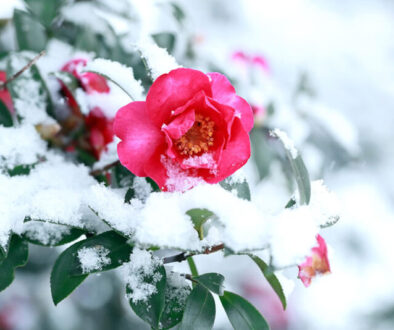Food is Life

Food is unique in that it is both a necessity and a luxury. To the privileged a fresh juicy red apple is pedestrian. To the homeless person, it’s a sumptuous feast. To some, the apple is the source of humanity’s original sin. To the chef, it is a building block to explore one’s creativity. It can become the star of a sinful tarte tatin, or a supporting player in a savory dish. Humanity is singular of nature’s creation in that we not only choose what we eat but we also choose how we consume our food. The lion on the plains of the Serengeti does not have gazelle Wellington or wildebeest Provençal.
Food is love. Providing hospitality to others is a base requirement in most cultures. The act of opening one’s home and heart and serving others is more important than what is on the table. Kindness to others should be humanity’s default setting without thought of repayment. Preparing and serving food to others nourishes the soul and for me is the best part of the holidays. In my many years in the kitchen, there have been days where I have forgotten to eat yet left work full after a guest had told me how the meal I prepared made their day or was the highlight of their celebration.

Holiday foods are foods of joy. I cannot eat stuffing any day of the year without being transported back in time to a rickety card/ children’s table surrounded by siblings, cousins, parents, and grandparents. A slice of pumpkin pie always evokes memories of my mom-mom’s pie which was and is still perfection on my palate. Enjoying and savoring your family’s history through its food traditions is what keeps us coming back to the table. There is a dichotomy in strict adherence to tradition with no new flavors or experiences. While attending a different family’s celebration can cause anxiety (Stove Top Stuffing—sacré bleu!), it can also be a rewarding growth experience. Turkey mole, sausage stuffing, tamales, and lasagna are some of the dishes I have been served at other tables. Definitely not the East Coast wasp food I grew up with.
Eating outside your comfort zone is challenging, but that’s how new traditions are born. For me, that’s the real meaning of the first Thanksgiving: an entrenched native population sharing their foods and traditions with sketchy newcomers/immigrants who in turn replicate their traditions with new and different ingredients. At the dinner table, we are all equal when eating from the same pot.
Christmas is the same melting pot of traditions. The Christmas brunch table would be laden with German stollen, Italian strata, a crustless quiche-like casserole, bagels with lox, and an assortment of schmears. Christmas cookies mingled with rugelach and hamantaschen. This nonsensical conglomeration of different cultures made peeking in the kitchen better than looking under the tree on Christmas Day.


Holding on to and passing down traditions is great, learning new traditions and discovering new dishes and flavors is even better. Opening one’s home, hearth, and heart to other people and cultures is truly what the holidays are about. Remember, even Scrooge changed in the end not by clinging to tradition but by opening his heart and embracing others.
This issue, try these recipes, and this holiday, open your heart, palates, and table to the traditions of others. Oyster dressing was my grandfather’s favorite. For those wanting to know the difference, when it’s cooked in the bird it’s stuffing; when baked separately it is dressing. These are Hanukkah classics: potato latkes and applesauce. Sausage strata is a great make-the-day-before bake-in-the-morning Christmas brunch dish. The holidays always mean cookies. Finally, try these recipes for golden rugelach and Spanish polvorones, a delicious pecan cookie, and add a little sweetness to your holiday table.
Recipes from this issue







